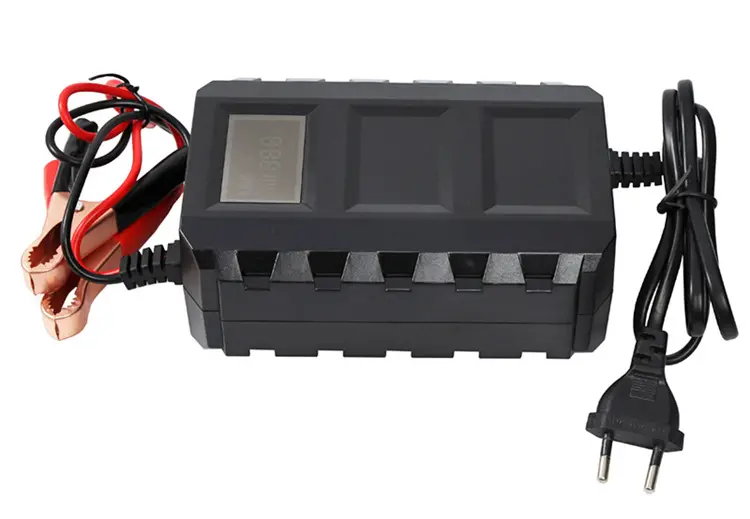Introduction
In today’s world, portable electronic devices have become an integral part of our lives. From smartphones to electric vehicles, batteries power these devices. One of the advanced battery technologies gaining popularity is Lithium Iron Phosphate (LiFePO4) batteries. These batteries are known for their high energy density, longer lifespan, and improved safety features compared to traditional lithium-ion batteries. In this article, we will explore the essential aspects of charging LiFePO4 batteries to ensure their optimal performance and longevity.
Understanding LiFePO4 Batteries
What are LiFePO4 Batteries?
LiFePO4 batteries, also known as lithium iron phosphate batteries, are a type of rechargeable lithium-ion battery. They use a cathode material composed of lithium iron phosphate, which offers several advantages over traditional lithium-ion batteries.
Advantages over Traditional Lithium-Ion Batteries
LiFePO4 batteries are preferred for various applications due to their unique advantages. They have a longer lifespan, typically exceeding 2000 charge cycles, making them a cost-effective choice in the long run. Additionally, they exhibit enhanced thermal and chemical stability, reducing the risk of overheating or combustion.
Factors Affecting LiFePO4 Battery Charging
Voltage Considerations
Charging LiFePO4 batteries requires adhering to specific voltage ranges. These batteries have a nominal voltage of around 3.2 volts per cell, which means a fully charged battery reaches about 3.65 volts.
Current Specifications
The charging current plays a crucial role in the battery’s health. It’s recommended to charge LiFePO4 batteries at a rate of 0.5 to 1C, where C represents the battery’s capacity. This controlled current ensures a safe and efficient charging process.
Temperature Sensitivity
LiFePO4 batteries can become damaged if charged or discharged at extreme temperatures. It’s essential to charge them within the recommended temperature range, usually between 0°C and 45°C (32°F and 113°F).
Preparing for LiFePO4 Battery Charging
Choosing the Right Charger
To maximize the performance of LiFePO4 batteries, it’s crucial to use a charger specifically designed for them. These chargers are equipped to provide the correct voltage and current, preventing overcharging or undercharging.
Safety Precautions
Before charging, ensure that the battery is in good condition without any visible damage. Use a clean and dry environment for charging to prevent any potential short circuits or accidents.
Step-by-Step Guide to Charge LiFePO4 Battery
Step 1: Checking the State of Charge
Before charging, check the battery’s state of charge. If it’s above 20%, you can proceed with the charging process.
Step 2: Connecting the Charger
Connect the LiFePO4 battery to the charger using the appropriate connectors. Double-check the polarity to avoid any reverse connections.
Step 3: Setting Voltage and Current
Set the charger’s voltage and current settings according to the manufacturer’s recommendations. Avoid using settings that exceed the battery’s specifications.
Step 4: Monitoring the Charging Process
Keep a close eye on the charging process. Modern chargers often display the battery’s voltage, current, and state of charge. This information helps ensure a safe and efficient charge.
Step 5: Completing the Charge
Once the battery reaches its full capacity, the charger will automatically stop the charging process. Disconnect the battery and charger carefully.
Charging Do’s and Don’ts
Do: Use a Dedicated LiFePO4 Charger
Using a charger designed for LiFePO4 batteries prevents overcharging and ensures a balanced charge across all cells.
Don’t: Overcharge the Battery
Avoid leaving the battery connected to the charger after it’s fully charged. Overcharging can lead to reduced battery lifespan and potential safety hazards.
Do: Monitor Temperature
Keep an eye on the battery’s temperature during charging. If it starts getting excessively hot, pause the charging process and allow it to cool down.
Optimizing Battery Lifespan
Charge at Moderate Temperatures
Charging LiFePO4 batteries within the recommended temperature range helps maintain their longevity and performance.
Avoid Deep Discharges
Frequent deep discharges can harm LiFePO4 batteries. Try to recharge them before their charge level drops significantly.
Regular Maintenance
Perform occasional full charge and discharge cycles to balance the cells and optimize overall battery performance.
Conclusion
Charging LiFePO4 batteries requires attention to detail and adherence to specific guidelines to ensure their safety and longevity. By understanding the unique characteristics of these batteries and following the recommended charging practices, users can make the most of their LiFePO4 battery-powered devices.
Frequently Asked Questions (FAQs)
- Can I use a regular lithium-ion battery charger for LiFePO4 batteries? It’s recommended to use a charger specifically designed for LiFePO4 batteries to avoid potential damage.
- What happens if I overcharge a LiFePO4 battery? Overcharging can reduce the battery’s lifespan and lead to safety risks such as overheating or swelling.
- Can I fast charge LiFePO4 batteries? Fast charging can be done, but it’s essential to follow the manufacturer’s recommended charging rates to prevent damage.
- Are LiFePO4 batteries suitable for solar energy storage? Yes, LiFePO4 batteries are an excellent choice for solar energy storage due to their high cycle life and safety features.
- Where can I find reliable LiFePO4 battery chargers? You can find dedicated LiFePO4 battery chargers from reputable electronics and battery equipment suppliers.
